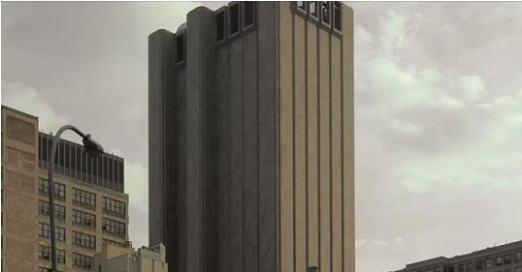33 Thomas Street: The Strange Windowless Skyscraper of New York

Tucked down in the center of Lower Manhattan is an unusual 29-story tower that sticks out amid the busy metropolitan structures. For years, New Yorkers have been drawn to this unusual building, 33 Thomas Street, because of its unusual appearance—it is entirely windowless. This structure, with its mysterious appearance and lack of windows, has an interesting history that combines contemporary monitoring with telecoms.
When 33 Thomas Street was first built in 1974, it was intended to be a secure communication hub that could resist nuclear explosions. Taking on the difficult undertaking, the architectural company John Carl Warnecke & Associates built a 550-foot granite and concrete skyscraper. This tower is dark and devoid of windows, in contrast to the residential and office buildings nearby. Its massive shadow is formed by its intimidating presence during the day, and at night, its square vents emit a subtle hum that gives off an uncanny air.
As one of the most recognizable buildings in the city, 33 Thomas Street has garnered the moniker “Long Lines Building” due to its enigmatic and massive appearance.
Its unusual exterior conceals a darker secret. Architectural blueprints, information from former AT&T workers, and secret papers acquired by NSA leaker Edward Snowden all contributed to the growing body of evidence indicating 33 Thomas Street was an NSA monitoring location known as Titanpointe.
An important international gateway switch that handles call routing between the US and other nations is housed within the building. It is thought that these calls were intercepted by the NSA from a safe location inside the AT&T headquarters. This clandestine monitoring scheme encompassed several nations, including friends of the United States, in addition to global institutions like the World Bank, the International Monetary Fund, and the United Nations.
Although AT&T and the NSA have long cooperated on surveillance projects, the precise function that buildings like 33 Thomas Street played in housing top-secret operations has long been a matter of mystery. But the Snowden documents provided insight into how NSA hardware was incorporated into AT&T’s network, exposing the techniques and tools the agency used to obtain communications data from the company’s systems.
The NSA’s location in this famous tower begs important concerns about the limits of monitoring in the contemporary day. “This is yet more proof that our communications service providers have become, whether willingly or unwillingly, an arm of the surveillance state,” notes Elizabeth Goitein, co-director of the Brennan Center for Justice’s Liberty and National Security Program.
The strong ties between AT&T and the NSA have been well-documented. It is still unknown, though, if the NSA used AT&T’s 33 Thomas Street facility or equipment for monitoring purposes. Significant concerns over the scope of government monitoring within the structure are brought up by this uncertainty.
The NSA’s participation in surveillance activities within 33 Thomas Street not only gives rise to moral and legal dilemmas, but it also highlights the fine line that must be drawn in our linked world between security and privacy. It draws attention to the difficulties in guaranteeing sufficient supervision in a time of cutting-edge technology and governmental monitoring.
In summary, 33 Thomas Street is a famous and mysterious skyscraper in New York City. It contains the mysteries of the past and the history of telecommunications behind its concrete walls.



